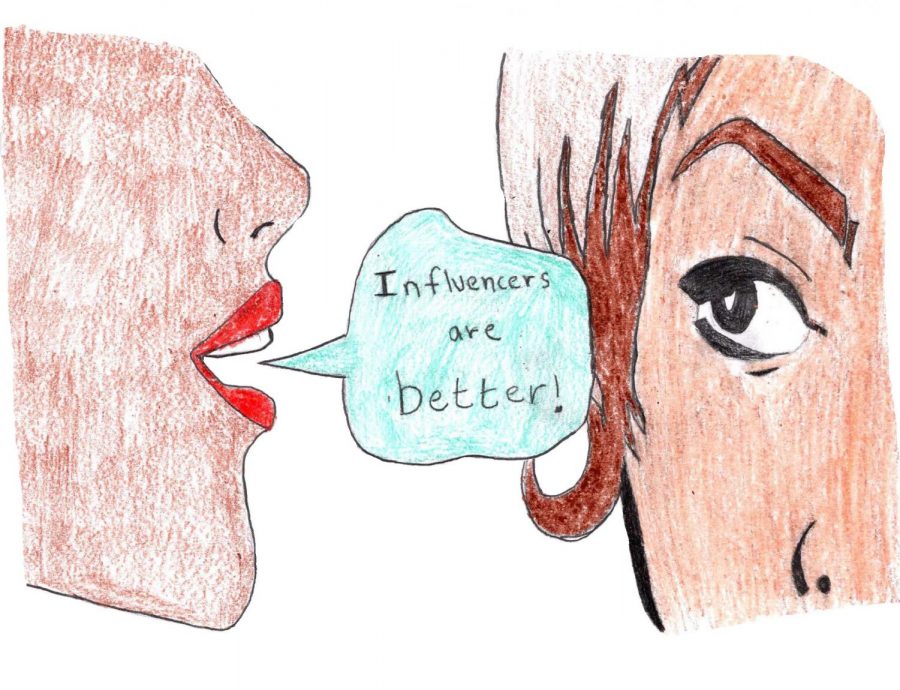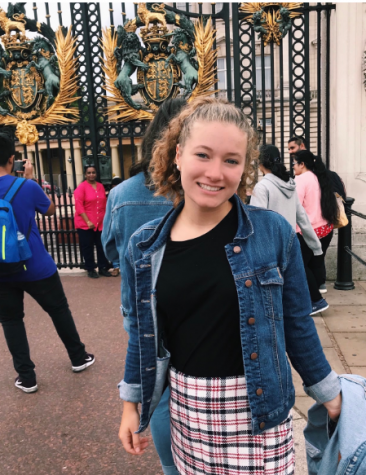Influencer culture, exclusivity creates toxic messages in media
December 13, 2019
Before influencer culture became a main platform for online fame, fashion and beauty brands commonly endorsed celebrities to be the face of their products, along with non-profit organizations who teamed up with celebrities.
“I think [influencer culture] can be positive because as we know, the internet has become a place where we can spread a message very fast, for better or for worse, and I think influencers have become almost like voted representatives. There are people that back them up and people that listen to their message,” says student YouTuber Oliver Leopold.
Companies have used celebrities to draw in buyers and make the products seem necessary. Celebrity branding is a form of advertising that involves a well known person using their fame to help promote a product or service, according to business dictionary.
Though celebrity branding has changed substantially throughout the years, its racial and gender makeup has stayed consistent. Many brands tend to publicize white, slim models while other races have not been represented.
“I think that who becomes famous is up to the people who have a lot of followers, which is usually white people,” says sophomore Faith Brown. “So the minorities become less popular and white people become more popular, which means there is less representation for everyone else.”
Most companies can agree that celebrity branding is a way to make a name for a company. However, many businesses are switching over to the next big thing: influencers. With the growing importance of brand recognition on social media, influencers are becoming businesses’ first choice rather than a singular celebrity face.
An influencer is an individual who has the power to affect the purchase decisions of others because of their authority, knowledge, position or relationship with his/her audience, according to Influencer Marketing Hub.
“[Influencer culture is] the people that make other people want to do something good,” says junior Mekhi Williams. “It’s basically the people that are doing something good and want to help inspire other kids.”
Social influencers nowadays are mostly found on social media apps such as Instagram. Influencers use and wear products and post pictures in them promoting the product and brand. Many companies are switching to influencer branding rather than celebrity branding because it relates to the public.
“[Influencers are] much more approachable and realistic for the general public to draw inspiration and take action on,” says Adam Rivietz, Co-founder of #paid, in a 2018 interview with Heather Aponte for Digimind’s online blog.
Arguably the most famous and earliest influencer is none other than America’s favorite family: the Kardashians. Some say that the Kardashians are the first example of people who are both celebrities and influencers.
“I think [the Kardashians] are the first ever celebrities to combine being a celebrity with being an influencer,” says sophomore Avery Peterson. “They have revolutionized how celebrities can use social media. They are the perfect combination of being personable yet untouchable, and they use their social media to connect with their fans but also to keep their celebrity status. They are everywhere from ads to an Instagram post.”
Though influencers are thought of as people who can relate to all, influencers are only relating to a certain group of people. Many companies have taken influencers that represent their companies on trips to encourage viewers to invest in their products. Buyers have noticed that these groups of influencers are predominantly (and sometimes all) white, petite females.
In August 2019, clothing chain Altar’d State posted from a “blogger adventure” it hosted in Denver with a group of Instagram influencers. The all white group of girls posed for a picture to promote the clothing they were fashioning from Altar’d State.
“Why is your instagram account all skinny white girls? This is 2019, there is a lot more diverse girls out there who need to be seen,” one account commented under the post. “I like your stuff, but this is not ok. Wish there was more diversity in your marketing.”
World famous American video-sharing company YouTube is a big platform for influencers. YouTubers who have millions of followers get brand deals and are paid to use or wear products in their videos. Throughout the videos, there are usually ads for brands, which Youtubers stop to talk about.
Additionally, many YouTubers have made their own lines of clothing, jewelry or other lines of product that they self advertise for. Youtubers also have sponsored video where influencers pause in their video to promote a specific brand. These products are mainly bought by those who are viewers of the Youtuber and want to feel closer to these influencers.
Though Youtube can be a great way for influencers to grab viewer’s attention and make names for themselves, many scandals follow.
Influencer run clothing brand Dote has been accused of being racist and unfair to influencers of color on their influencer trips. Youtube influencers Kianna Naomi and Daniella Perkins have both made videos about the treatment they received on these trips. Both girls talked about how the white girls on the trip received better treatment and were posted more on the company’s Instagram even though the trips were purely for pictures. These events have sparked debates about media coverage of influencers and how it affects brand popularity.
“I think it’s true that any press is good press,” says Brown, “I think that if it’s bad press you don’t necessarily want it, but will draw more attention to your name and you will get more traction from that, so essentially it turns out to be good, but people will just have a bad taste in their mouth when they hear your name.”
Social media has changed a lot throughout its time in use. By showing more diverse influencers, social media will be a more accepting and welcoming place for future generations.
“I think the internet is growing in a way where people will be more open-minded,” says Leopold. “I think that millennials and gen z and more youthful people are definitely growing into a place where the internet is a safe space, and it could definitely grow into a place where anyone can be a popular influencer.”










